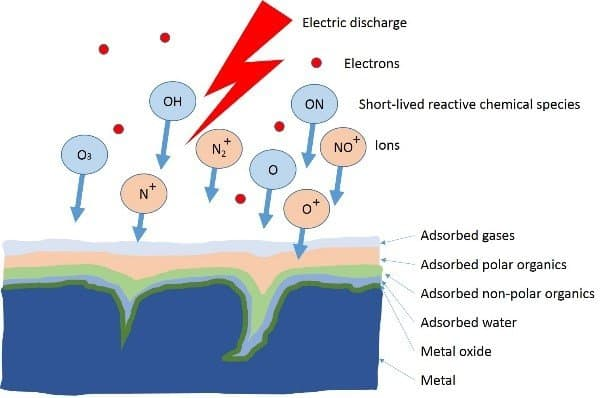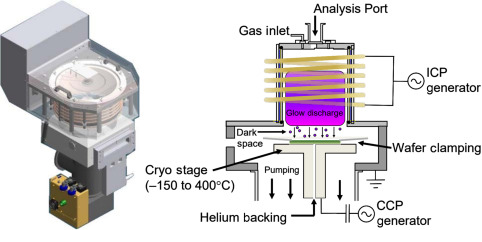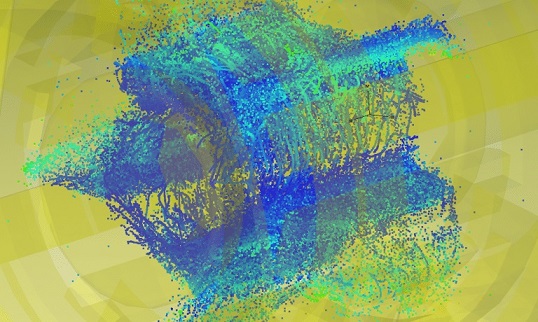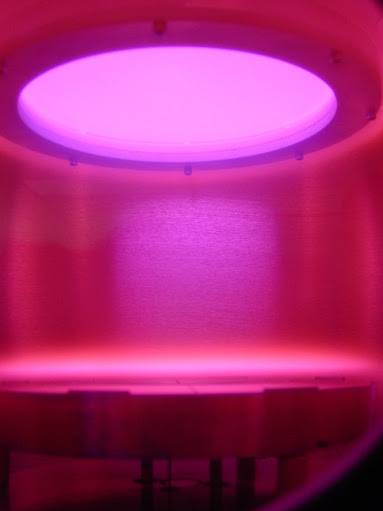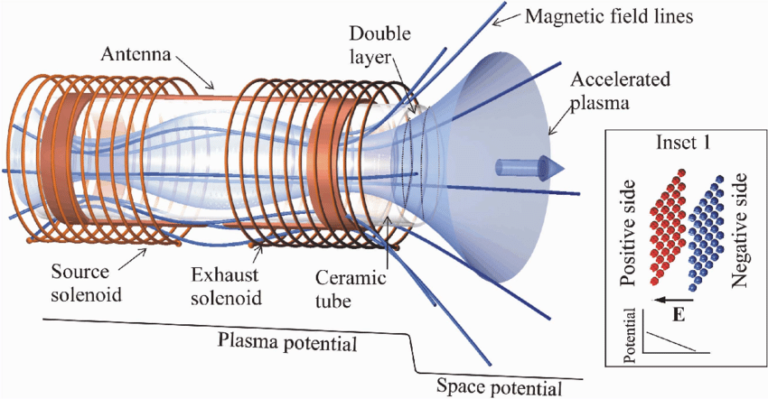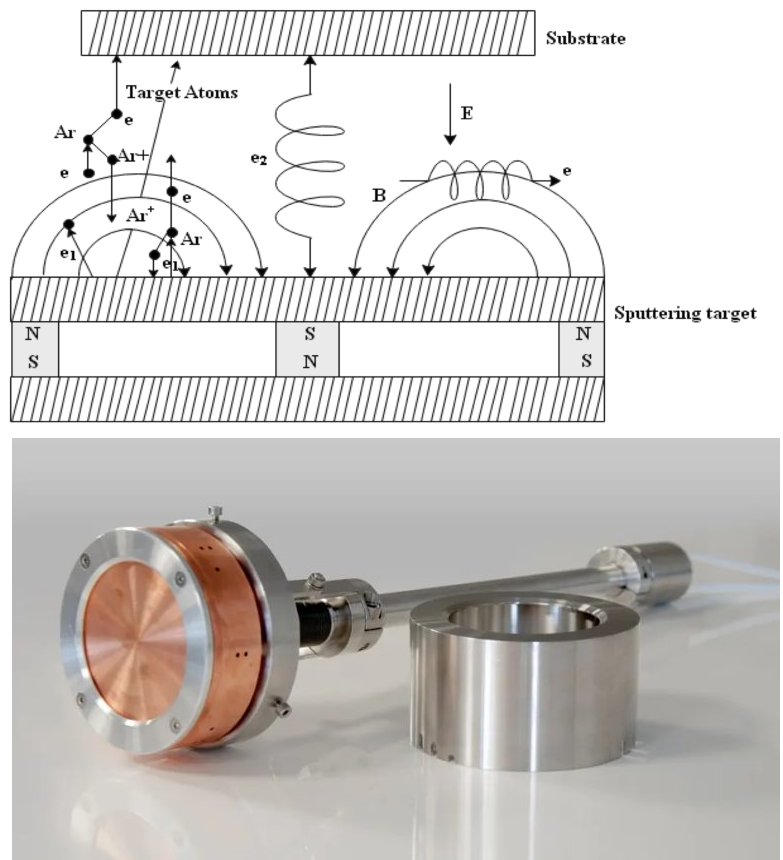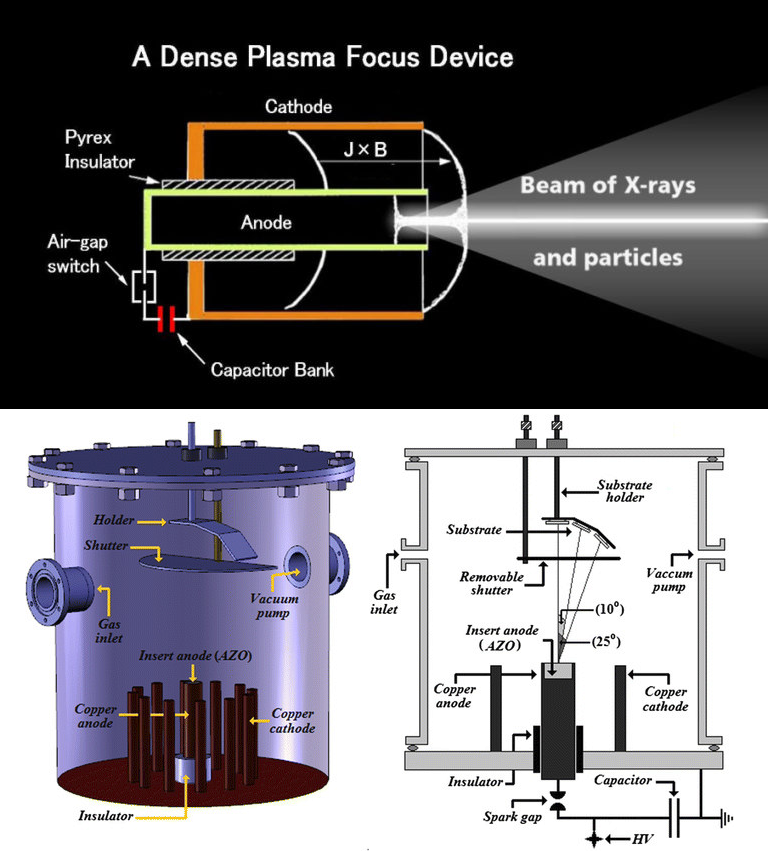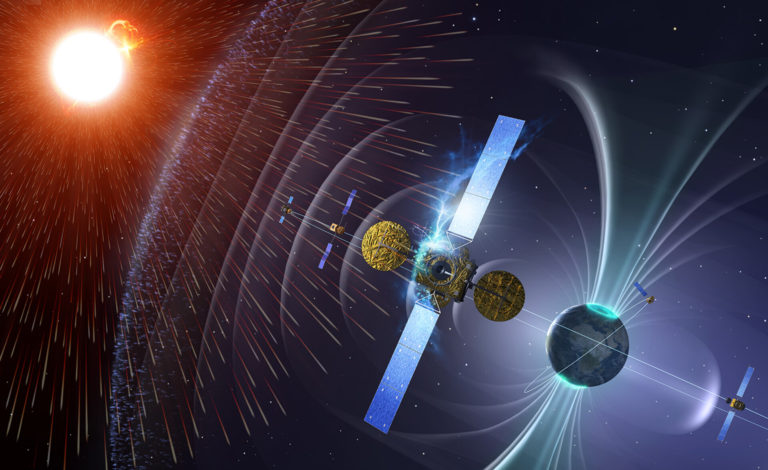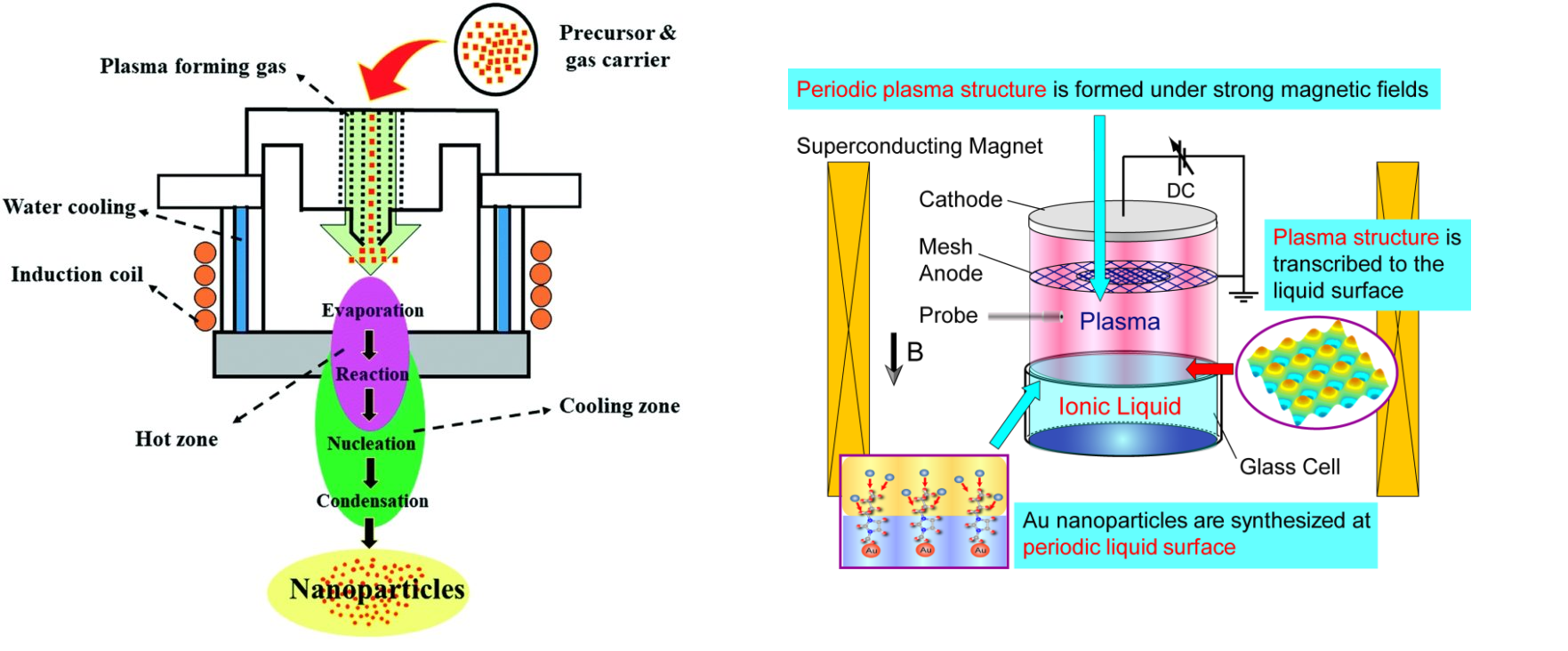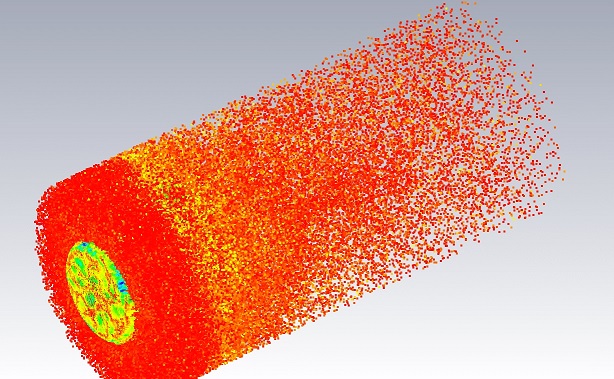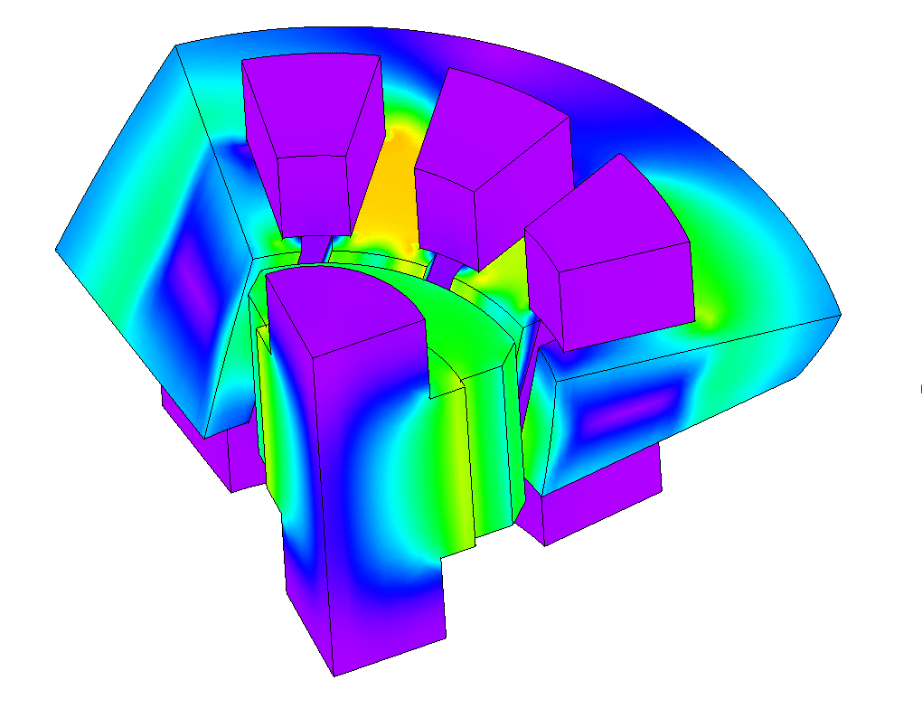Plasma etching is an essential tool in today's world, enabling many of the technologies we take for granted. The chemical nature of a process gas dictates how its plasma reacts with the surface of a material and therefore the effectiveness of plasma etching. For instance, tetrachloromethane (CCl4) etches silicon and aluminium effectively but the plasma etching of silicon dioxide and silicon nitride requires the use of trifluoromethane (CHF3). Native oxide layers, on the other hand, can be removed from a titanium surface by argon plasma etching. Other examples of plasma etching as a means of surface preparation for biomedical coatings.
Inductively Coupled Plasma Reactive-Ion Etching (ICP-RIE):
Inductively coupled plasma reactive ion etching (ICP-RIE) is used in the fabrication of GaAs slab-coupled optical waveguide (SCOW) laser and amplifier devices in order to prepare etched-ridge-waveguide surface features. The processing of GaAs wafer pieces (less than full wafers) requires mounting these samples on a ceramic or silicon carrier wafer by means of a thermally conductive mounting paste to improve thermal contact between the GaAs and carrier wafer. However, use of a mounting paste requires additional postetch handling of samples, including mechanical clean-up and multiple solvent cleaning steps. Insufficient paste removal can lead to unwanted surface contamination and film adhesion issues during subsequent sample processing.
Reactive Ion Etching (RIE):
Reactive ion etching (RIE) is a plasma process where radiofrequency (RF) discharge-excited species (radicals, ions) etch substrate or thin films in a low-pressure chamber. RIE is a synergistic process between chemically active species and energetic ion bombardment. RIE is faster than either pure physical ion bombardment or spontaneous chemical etching. Understanding the consequences of local surface charging on the evolving etching profile is a critical challenge in high density plasma etching. Deflection of the positively charged ions in locally varying electric fields can cause profile defects such as notching, bowing, and microtrenching.
A realistic process simulation therefore needs to consider these interactions, which makes the numerical simulation more challenging. Suitable numerical methods or adequate approximations are crucial for the simulation of feedback and interactions.
